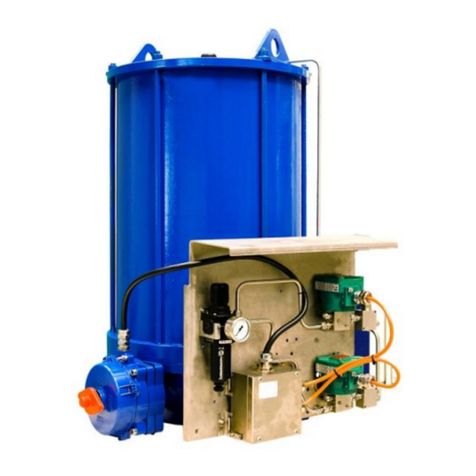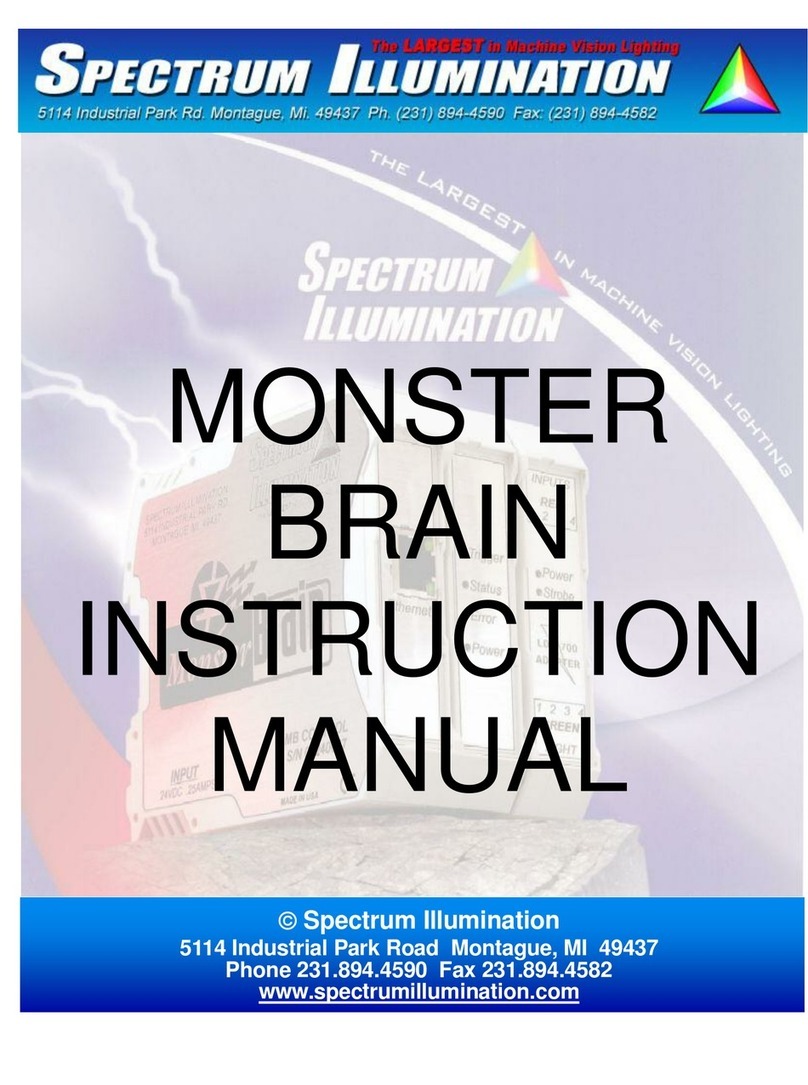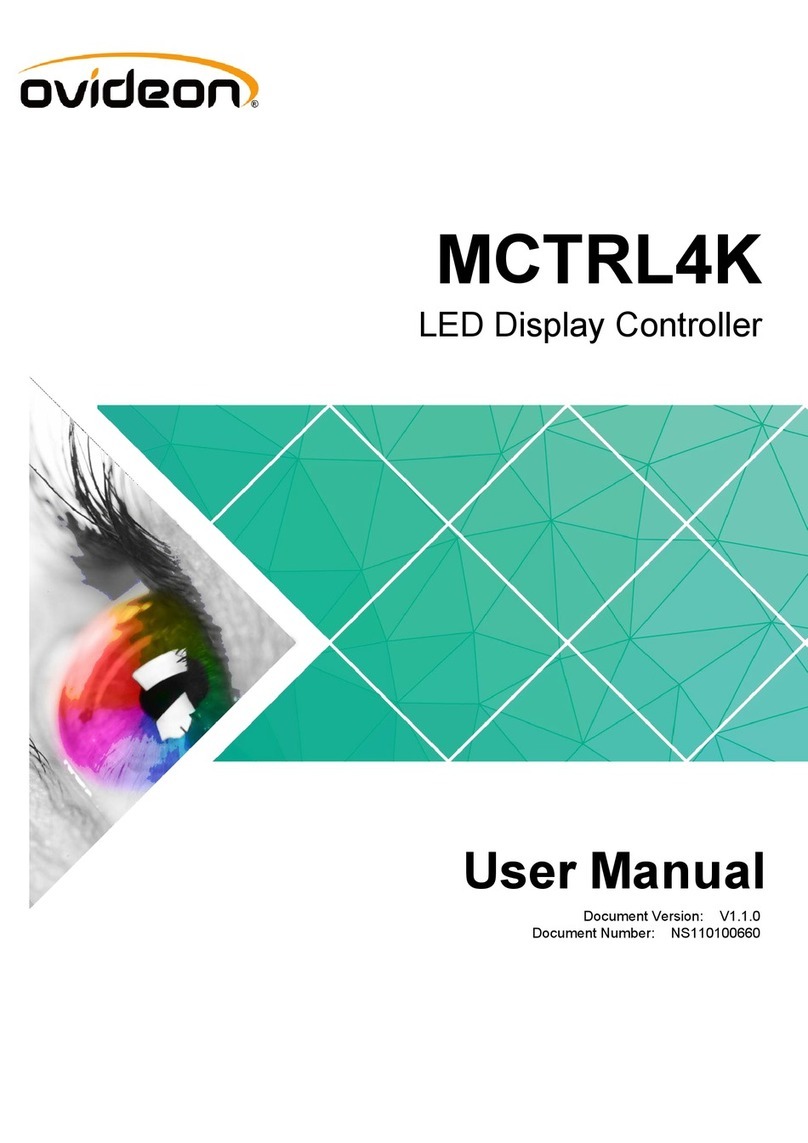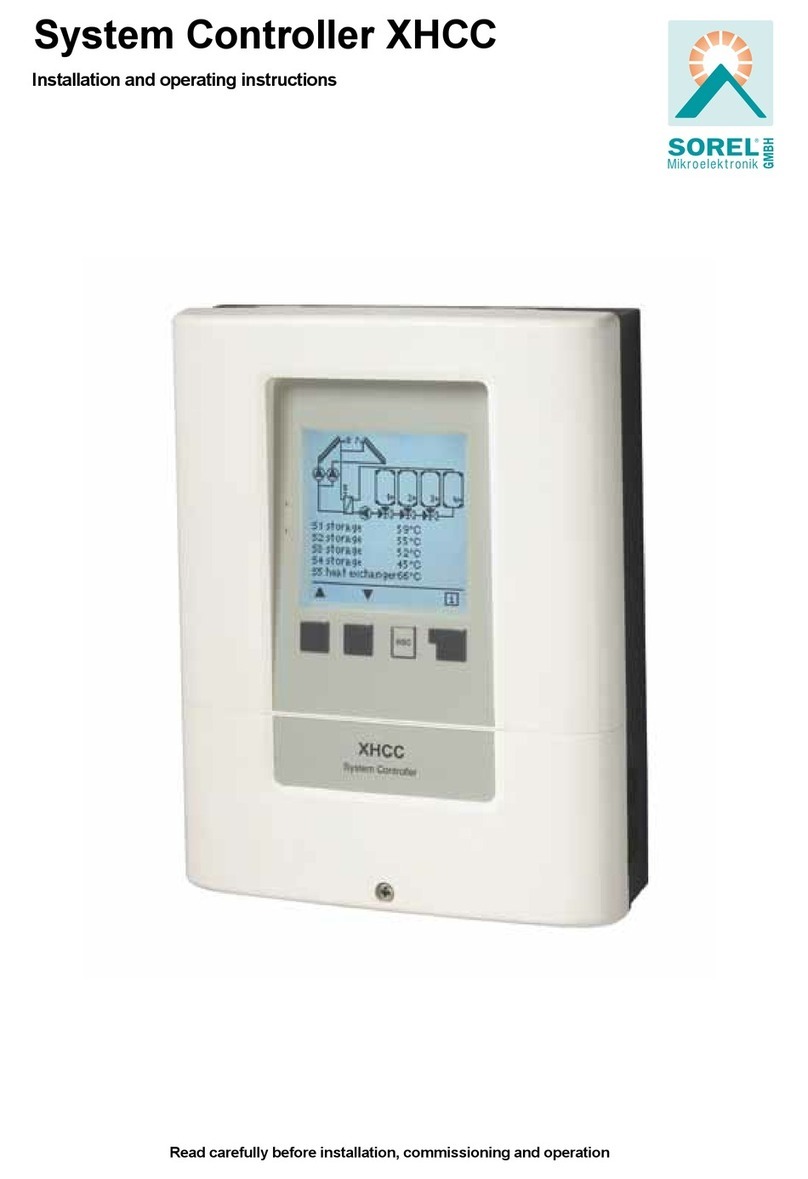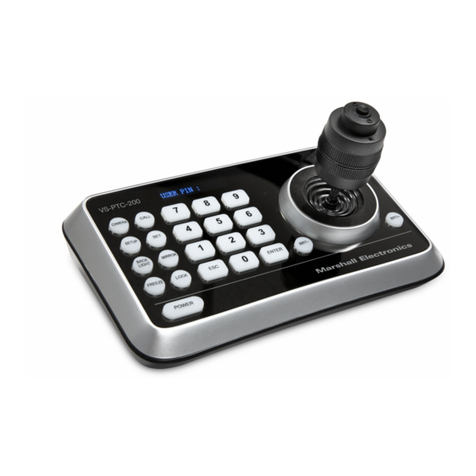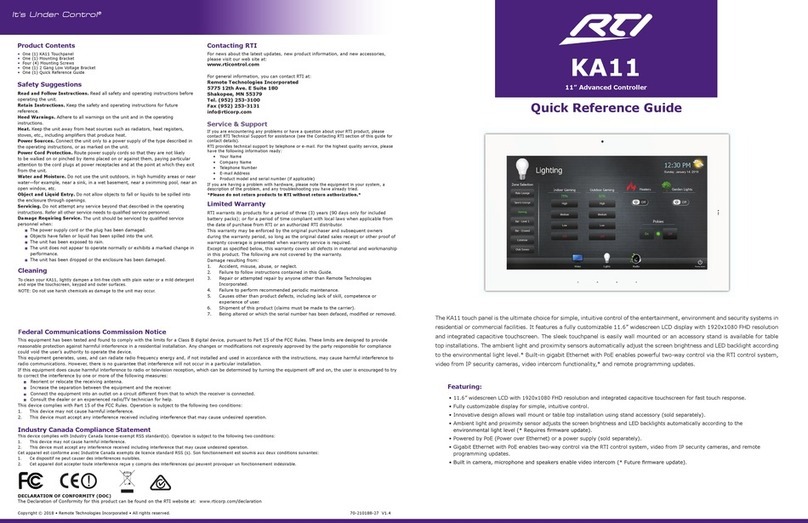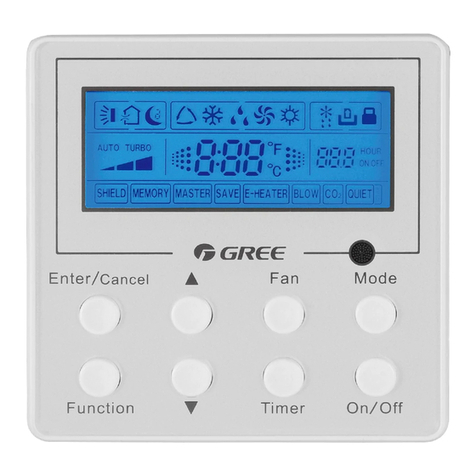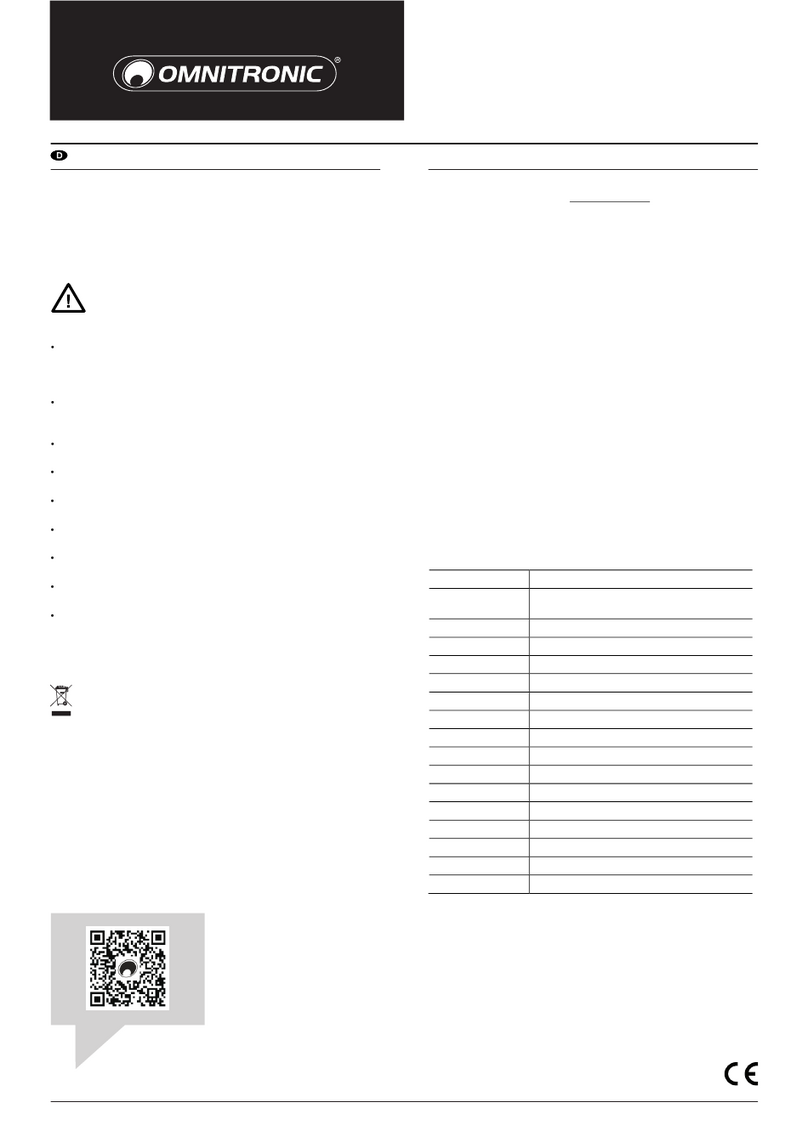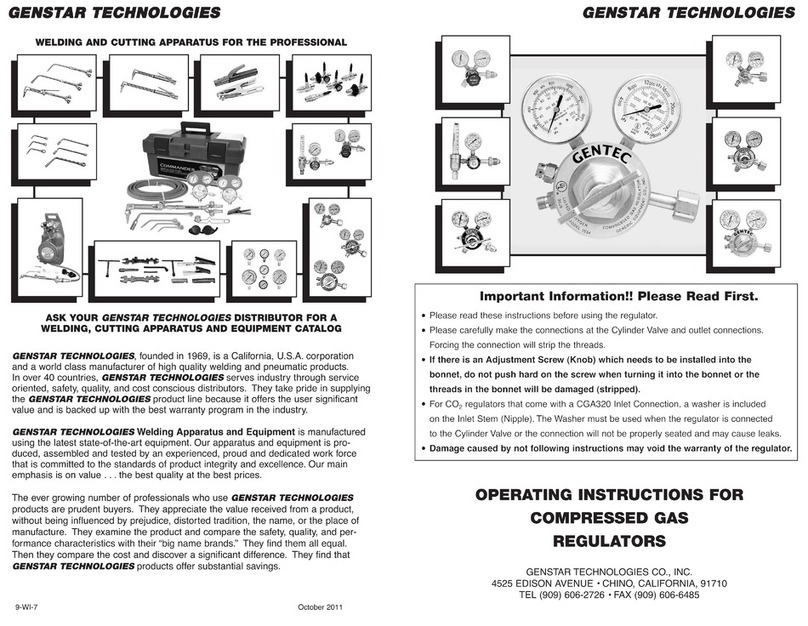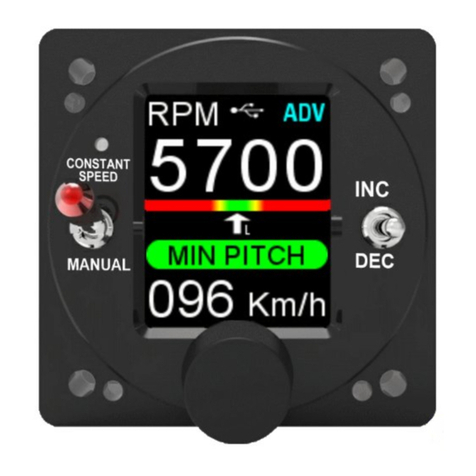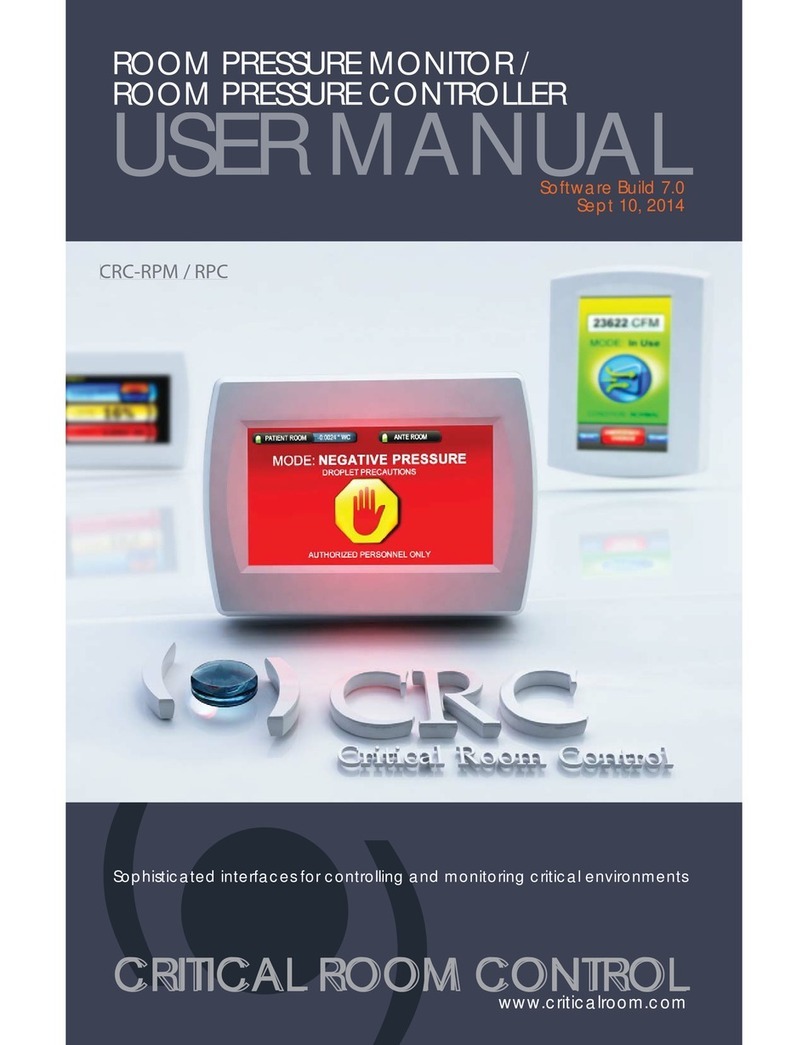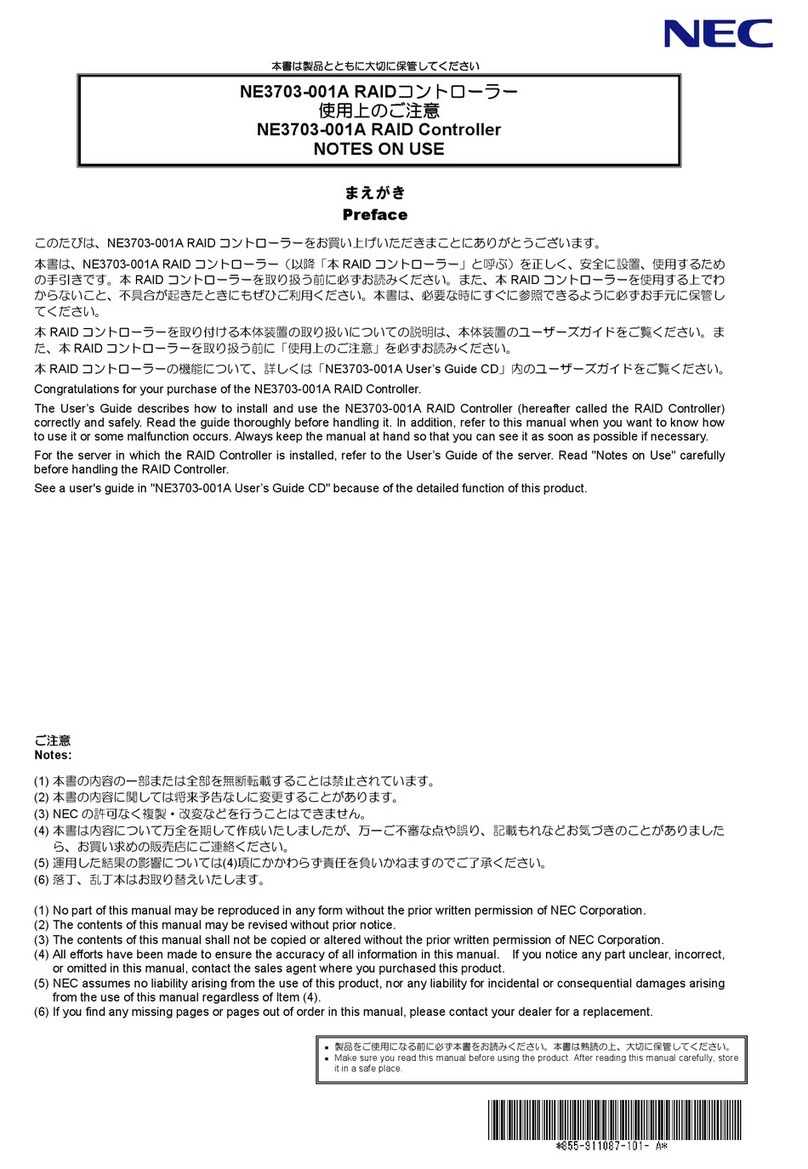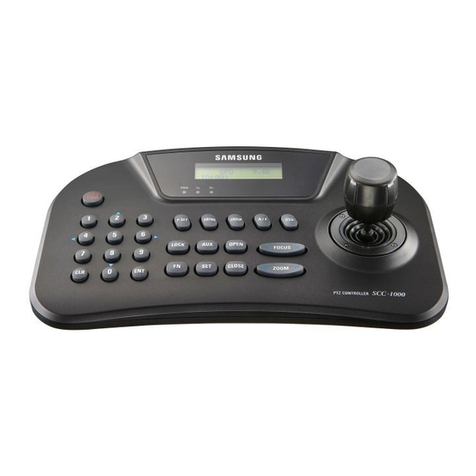BIFFI FCB Series User manual

Service Instructions
VCIOM-15313-EN Rev. 1
March 2022
FCB Series Pneumatic Actuators
Model FCBB Spring-Return Dissasembly and Reassembly
Copyright © Bif. The information in this document is subject to change without notice. Updated data sheets can be obtained from our website www.bif.it or from your nearest Bif Center:
Bif Italia s.r.l. - Strada Bif 165, 29017 Fiorenzuola d'Arda (PC) – Italy PH: +39 0523 944 411 – bif_italia@bif.it

This page intentionally left blank
Notes
March 2022
Service Instructions
VCIOM-15313-EN Rev. 1

iTable of Contents
Service Instructions
VCIOM-15313-EN Rev. 1
Table of Contents
March 2022
Table of Contents
Section 1: Introduction
1.1 General Service Information.......................................................................... 1
1.2 Denitions .................................................................................................... 2
1.3 General Safety Information ........................................................................... 2
1.4 Bif Reference Materials ................................................................................ 3
1.5 Service Support Items................................................................................... 3
1.6 Lubrication Requirements ............................................................................. 3
1.7 General Tool Information .............................................................................. 3
1.8 Actuator Weight ........................................................................................... 4
1.9 Actuator Storage........................................................................................... 4
1.10 Actuator Installation ..................................................................................... 4
1.11 Actuator Startup ........................................................................................... 5
1.12 Actuator Operation....................................................................................... 6
Section 2: Actuator Disassembly
2.1 General Disassembly ..................................................................................... 7
2.2 Spring Cylinder Disassembly.......................................................................... 8
2.3 Housing Disassembly .................................................................................. 10
Section 3: Actuator Reassembly
3.1 General Reassembly .................................................................................... 11
3.2 Housing Reassembly ................................................................................... 11
3.3 Spring Cylinder Reassembly......................................................................... 14
Section 4: Actuator Testing
4.1 Actuator Testing ......................................................................................... 17
4.2 Return to Service......................................................................................... 18
4.3 Pressure Requirement and Limitations for FCBB-SR Actuators ..................... 18
Section 5: Troubleshooting
5.1 Fault Insertion ............................................................................................. 19
5.2 Operational Test.......................................................................................... 20
Section 6: Removal and Decommissioning
6.1 Removal and Decommissioning .................................................................. 21
List of Tables
List of Tables ......................................................................................................... 22
Appendix A: List of Drawings
List of Drawings..................................................................................................... 23

This page intentionally left blank
Notes
March 2022
Service Instructions
VCIOM-15313-EN Rev. 1

Service Instructions
VCIOM-15313-EN Rev. 1
March 2022
1
Section 1: Introduction
Introduction
Section 1: Introduction
1.1 General Service Information
1.1.1 This service procedure is offered as a guide to enable general maintenance to be
performed on BifTM FCBB-SR spring-return series actuators. Table 1 is a list of
general FCBB-SR models numbers.
Table 1. FCBB-SR Model Numbers
MODEL (1) MODEL (1) MODEL (1)
FCBB315-SR FCBB315-SR-M3 FCBB315-SR-M3HW
FCBB415-SR FCBB415-SR-M3 FCBB415-SR-M3HW
FCBB420-SR FCBB420-SR-M3 FCBB420-SR-M3HW
FCBB520-SR FCBB520-SR-M3 FCBB520-SR-M3HW
FCBB525-SR FCBB525-SR-M3 FCBB525-SR-M3HW
FCBB725-SR FCBB725-SR-M3 FCBB725-SR-M3HW
(1) Also includes actuator models with -10 and -11 as a sufx.
NOTE:
When the actuator model number has “-S” as a sufx, then the actuator is special and may
have some differences that may not be included in this procedure.
1.1.2 Normal recommended service interval for this actuator series is ve years.
NOTE:
Storage time is counted as part of the service interval.
1.1.3 This procedure is applicable with the understanding that all electrical power and
pneumatic pressure have been removed from the actuator.
1.1.4 Remove all piping and mounted accessories that will interfere with the module(s)
that are to be worked on.
1.1.5 This procedure should only be implemented by a technically competent technician
who should take care to observe good workmanship practices.
1.1.6 Numbers in parentheses ( ) indicate the bubble number (reference number) used
on the Bif Assembly Drawing and Actuator Parts List.
1.1.7 When removing seals from seal grooves, use a commercial seal removing tool or a
small screwdriver with sharp corners rounded off.
1.1.8 Use a non-hardening thread sealant on all pipe threads.
! CAUTION
Apply the thread sealant as per the manufacturer’s instructions.
1.1.9 Bif recommends that disassembly of the actuator should be done in a clean area
on a workbench.

March 2022
Service Instructions
VCIOM-15313-EN Rev. 1
2
Section 1: Introduction
Introduction
1.2 Denitions
! WARNING
If not observed, user incurs a high risk of severe damage to actuator and/or fatal injury
to personnel.
! CAUTION
If not observed, user may incur damage to actuator and/or injury to personnel.
NOTE:
Advisory and information comments provided to assist maintenance personnel to carry out
maintenance procedures.
NOTE:
This product is only intended for use in large-scale xed installations excluded from the
scope of Directive 2011/65/EU on the restriction of the use of certain hazardous substances
in electrical and electronic equipment (RoHS 2).
M3:
Jackscrew or jackscrew assembly
ES:
Extended Stop(s)
1.3 General Safety Information
1.3.1 Products supplied by Bif, in its “as shipped” condition, are intrinsically safe if the
instructions contained within this Service Instruction are strictly adhered to and
executed by well-trained, equipped, prepared and competent personnel.
! WARNING
For the protection of personnel working on Bif actuators, this procedure should be
reviewed and implemented for safe disassembly and reassembly. Close attention should
be noted to the WARNINGS, CAUTIONS and NOTES contained in this procedure.
! WARNING
This procedure should not supersede or replace any customer’s plant safety or work
procedures. If a conict arises between this procedure and the customer’s procedures the
differences should be resolved in writing between an authorized customer’s representative
and an authorized Bif representative.

Service Instructions
VCIOM-15313-EN Rev. 1
March 2022
3
Section 1: Introduction
Introduction
1.3.2 Electrostatic Charge
! WARNING
An electrostatic charge risk is present on the actuator surface; in case of cleaning,
use only antistatic cloth; in case of maintenance, avoid all rubbing/frictions that could
electrostatically charge the equipment.
1.4 Bif Reference Materials
1.4.1 FCBBXXX-SRX Assembly Drawing, use part number 152230.
1.4.2 FCBBXXX-SRX-M3HW Assembly Drawing, use part number 152608.
1.5 Service Support Items
1.5.1 Bif Service Kit
1.5.2 Commercial leak testing solution
1.5.3 Non-hardening thread sealant
1.6 Lubrication Requirements
1.6.1 The actuator should be relubricated at the beginning of each service interval using
the following recommended lubricants.
NOTE:
Lubricants other than those listed in step 1.6.2 should not be used without prior written
approval of Bif Product Engineering. The lubricant item number on some assembly
drawings is item (5) while the Bif service kits lubricant item number is item number (500).
1.6.2 Standard and high temperature services (-20 °F to +350 °F)/(-29 °C to 176 °C)
use Bif ESL-5 lubricant. ESL-5 lubricant is contained in the Bif Module Service Kit
in tubes or cans and they are marked ESL-5 and 10 lubricant. For low temperature
service (-40 °F to 150 °F)/(-40 °C to 65.6 °C) use ESL 15 lubricant. ESL 15 lubricant
is contained in low temperature Bif module service kits in tubes or cans and they
are marked ESL 15 lubricant.
1.7 General Tool Information
1.7.1 All threads on FCB series actuators are inch unied and NPT.
1.7.2 All tools/hexagons are American Standard inch. Two adjustable wrenches,
Allen wrench set, small standard screwdriver with sharp edges rounded off,
medium-size standard screwdriver, diagonal cutting pliers, external snap ring
pliers, at le, drive ratchet/deepwell socket set and torque wrench
(up to 2,000 in-lb/226 Nm).

March 2022
Service Instructions
VCIOM-15313-EN Rev. 1
4
Section 1: Introduction
Introduction
Actuator
Model
Approximate
Weight (3)
Actuator
Model
Approximate
Weight (3)
FCBB LB KG FCBB LB KG
315-SR40 (1) 22 10.0 520-SR40 (1) 45 20.4
315-SR60 (1) 23 10.4 520-SR60 (1) 48 21.8
315-SR80 (1) 26 11.8 520-SR80 (1) 49 22.2
315-SR100 (1) 25 11.4 520-SR100 (1) 53 24.0
415-SR40 (1) 27 12.2 525-SR40 (2) 62 28.1
415-SR60 (1) 29 13.2 525-SR60 (2) 65 29.5
415-SR80 (1) 30 13.6 525-SR80 (2) 65 29.5
415-SR100 (1) 31 14.1 525-SR100 (2) 67 30.4
420-SR40 (1) 37 16.8 725-SR40 (2) 97 44.0
420-SR60 (1) 39 17.7 725-SR60 (2) 98 44.5
420-SR80 (1) 40 18.1 725-SR80 (2) 104 47.2
420-SR100 (1) 41 18.6 725-SR100 (2) 107 48.5
(1) When model has -M3HW add 2.0 pounds/0.9 kilograms.
(2) When model has -M3HW add 4.0 pounds/1.8 kilograms.
(3) Weight is for bare actuator without accessories or valve adaptation.
1.9 Actuator Storage
For applications where the actuator is not put into immediate service it is recommended
that the actuator be cycled with regulated clean/dry pneumatic pressure at least once per
month. Indoor storage, if available, is recommended for all actuators. Care should be taken
to plug all open ports on actuator and controls to keep out foreign particles and moisture.
Also, actuators should not be stored in an atmosphere harmful to resilient seals. For
extended storage, contact the factory.
1.10 Actuator Installation
1.10.1 Since there are many valve and actuator combinations, it is not practical to include
detailed instructions for each type. Mountings are designed to be as simple as
possible to keep guess work out of installation.
1.10.2 Actuators are shipped from the factory with the travel stops adjusted for
approximately 90° rotation. Generally it is necessary to make slight travel stop
adjustments once the actuator is installed on the valve. Refer to the valve
manufacturer’s recommendations for specic requirements. When the valve has
internal stops, the actuator should be adjusted at the same points.
NOTE:
The actual “stopping” should be done by the actuator. If the valve does not have internal
stops, adjust the actuator to the full open position. Using this as a reference point, rotate the
valve until it’s closed and adjust to the valve manufacturer’s specications for total rotation.
1.8 Actuator Weight
Table 2. Actuator Weight

Service Instructions
VCIOM-15313-EN Rev. 1
March 2022
5
Section 1: Introduction
Introduction
1.10.3 Good instrument practices are also recommended. Clean/dry regulated
pneumatic pressure is essential for long service life and satisfactory operation.
It should be noted that new pneumatic lines often have scale and other debris in
them and these lines should be purged of all foreign material.
NOTE:
Scale and debris can damage control valves, solenoids, seals, etc.
1.11 Actuator Startup
1.11.1 Prestart-up checks
a. Unit has been mounted on valve properly. Gear ange mounting bolts,
stem key and setscrew(s) are installed and secured
b. No tubing damaged or accessories dislodged during shipping
or installation
c. Indicated position conrms valve position
d. All switching valves in normal operating position as per
Schematic/Instructions
1.11.2 Check Connections
a. Pneumatic/hydraulic components connected as per schematic enclosed
or in service manual supplied
b. Pneumatic supply connected to identied ports
c. Electrical connections terminals are secure
d. Wiring as per enclosed diagram or service manual supplied
1.11.3 When actuator is rst put into service it should be cycled with regulated
pneumatic pressure. This is necessary because the seals have been stationary,
causing them to take a “set”. Therefore, the actuator should be operated through
several cycles, exercising the seals, resulting in a service-ready condition.
1.11.4 The actuator speed of operation is determined by a number of factors including:
a. Power supply line length
b. Power supply line size
c. Power supply line pressure
d. Control valve and tting orice size
e. Torque requirements of the valve
f. Size of the actuator
g. Setting of speed controls

March 2022
Service Instructions
VCIOM-15313-EN Rev. 1
6
Section 1: Introduction
Introduction
1.11.5 Due to the interaction of these variables it is difcult to specify a “normal”
operating time. Faster operating times may be obtained by using one or more of
the following:
a. Larger supply lines
b. Larger control valve
c. Higher supply pressure*
d. Quick exhaust valves
*Not to exceed maximum operating pressure of actuator or control components slower
operating times may be obtained using ow control valves to meter the exhaust. Excessive
exhaust ow metering may cause erratic operation. Normally, incoming supply should not
be metered.
1.12 Actuator Operation
1.12.1 Controlled Operation: Controlled operation is accomplished by pressurizing
and/or depressurizing the appropriate cylinder inlet(s) of a double-acting.
Do not exceed the pressures indicated on actuator nameplate.
1.12.2 Manual Operation: All pressure must be vented or equalized on both sides of the
pneumatic piston prior to manual operation.

Service Instructions
VCIOM-15313-EN Rev. 1
March 2022
7
Section 2: Actuator Disassembly
Actuator Disassembly
Section 2: Actuator Disassembly
2.1 General Disassembly
! WARNING
It is possible that the actuator may contain a dangerous gas and/or liquids.
Ensure that all proper measures have been taken to prevent exposure or release of these
types of contaminants before commencing any work.
! CAUTION
Pressure applied to the actuator is not to exceed the maximum operating pressure rating
listed on the actuator name tag.
NOTE:
Before starting the general disassembly of the actuator it is a good practice to operate
actuator with the pressure used by the customer to operate the actuator during normal
operation. Notate and record any abnormal symptoms such as jerky or erratic operation.
2.1.1 Remove all operating pressure from actuator, allowing the spring to stroke.
The spring will rotate the yoke to its fail position.
2.1.2 Record the settings of stop screw/ES/M3 jackscrews (1-70) and stop screw/
ES (4-30) before they are loosened or removed.
NOTE:
In place of stop screws the actuator may be equipped with one or two ES (ES = Extended
Stops) or one M3/M3HW (1-70) located on outboard end of housing (1-10).

March 2022
Service Instructions
VCIOM-15313-EN Rev. 1
8
Section 2: Actuator Disassembly
Actuator Disassembly
2.2 Spring Cylinder Disassembly
NOTE:
Review Section 2, steps 2.1.1 through 2.1.2 before proceeding with cylinder disassembly.
! CAUTION
The spring in FCB-Series spring-return actuators is preloaded.
! WARNING
Actuator must be disassembled in the following manner:
2.2.1 Remove hex nut (1-80) as follows: For FCBB315 through 725 standard housing
stop screw or extended stop (ES) use step 2.2.1.1. For FCBB315-SR-M3/M3HW
through FCBB725-SR-M3/M3HW use step 2.2.1.2.
2.2.1.1 Step 1. For FCBB315 through 725 housing stop screw or extended stop
screw (ES):
2.2.1.1.1 Loosen and remove hex nut (1-80) and washer (2-35) from
stop screw (1-70) located in housing (1-10).
2.2.1.1.2 Remove stop screw (1-70) located in housing (1-10).
2.2.1.2 For FCBB315/420/520/525/725-SR-M3 or M3HW:
2.2.1.2.1 Remove retainer ring (12-30) and groove pin (12-20) from
optional hex drive hub or from hand wheel (12-10).
2.2.1.2.2 Remove optional hex drive hub or handwheel (12-10) from M3
jackscrew (1-70).
2.2.1.2.3 Loosen and remove hex nut (1-80) from M3 jackscrew (1-70).
NOTE:
For FCBB420, 520, 525, 725-SR-M3 or M3HW models: the M3 jackscrew (1-70) cannot be
removed now. The M3 jackscrew used in these models can be removed later in this
procedure per step 2.3.7.
2.2.2 Loosen and remove hex nut (4-40) and washer (4-90) from end cap stop screw
(4-30) or from end cap extended stop (4-30).
NOTE:
Extended stop or end cap stop screw (4-30) does not require removal from end cap (4-20)
unless a new extended stop or stop screw is being replaced.

Service Instructions
VCIOM-15313-EN Rev. 1
March 2022
9
Section 2: Actuator Disassembly
Actuator Disassembly
2.2.3 Remove breather (30) from end cap (4-20).
2.2.4 For models with BREATHER -10 COLD TEMP, do the following:
2.2.4.1 Remove breather (30-10), elbow (30-30) and hex nipple (30-20) from
end cap (4-20).
2.2.5 Remove acorn nut (8-20) and gasket seal (5-50) from end cap (4-20).
2.2.6 Use a ratchet and socket on the welded nut, located on the housing end of center
bar assembly (8-10). Rotate center bar assembly (8-10) counter-clockwise (CCW).
This will cause end cap (4-20) to gradually unscrew from center bar assembly (8-10).
NOTE:
The end cap (4-20) can be held in position by holding the end cap (4-20) with an
adjustable wrench.
2.2.7 Continue to rotate center bar assembly (8-10) counter-clockwise (CCW) until the
spring preload is eliminated. As preload is reduced it may be necessary to keep end
cap (4-20) from turning.
2.2.8 After the spring preload is eliminated, unscrew and remove end cap (4-20) from
center bar assembly (8-10).
2.2.9 Remove spring (4-70) from within spring cylinder (4-10).
2.2.10 Hold torque shaft (1-30) and pull spring cylinder (4-10) away from housing (1-10);
slide spring cylinder over piston (4-50) and remove.
2.2.11 For FCBBXXX-SR-M3/M3HW and FCBBXXX-SR models, do the following:
2.2.11.1 Remove spacer (4-25) from center bar assembly (8-10).
2.2.12 Pull piston (4-50) out of housing (1-10) and carefully slide piston off of center bar
assembly (8-10).
NOTE:
Piston (4-50) is an assembly made up of one roll pin and one yoke pin; do not attempt to
disassemble the piston assembly.
2.2.13 On models FCBB415-SR, FCBB520-SR, and FCBB725-SR, remove cylinder
adapter (4-15).

March 2022
Service Instructions
VCIOM-15313-EN Rev. 1
10
Section 2: Actuator Disassembly
Actuator Disassembly
2.3 Housing Disassembly
2.3.1 Remove center bar assembly (8-10) from housing (1-10).
2.3.2 Remove both retaining rings (1-60) from torque shaft (1-30). Remove washers
(1-65) from housing.
2.3.3 The following steps may be required before disassembly can continue.
2.3.3.1 If torque shaft (1-30) has any raised burrs or sharp edges they should
be removed.
NOTE:
When removing burrs and sharp edges, remove as little metal as possible.
2.3.3.2 If there is excessive paint build-up on torque shaft (1-30) it should
be removed.
2.3.4 Remove the torque shaft (1-30) by pushing it out one side of housing (1-10).
2.3.5 Remove yoke key (1-40) and yoke key spring (1-50) from torque shaft (1-30).
2.3.6 Remove yoke (1-20) from housing (1-10).
2.3.7 For actuator models FCBB315-SR with a M3 or M3HW mounted in the outboard
end of housing (1-10), remove M3 jackscrew (1-70) from housing (1-10).
NOTE:
The M3 jackscrew (1-70) will be removed from the inside of the housing (1-10).
2.3.8 For actuator models FCBB420, 520, 525 and 725 with a M3 or M3HW mounted in
the outboard end of housing (1-10) complete steps 2.3.8.1 and 2.3.8.2.
2.3.8.1 Remove retainer ring (2-40) from M3 adapter (1-90).
2.3.8.2 Remove M3 adapter (1-90) from housing (1-10).
NOTE:
The M3 adapter will be removed from the inside of the housing (1-10) with the M3 jackscrew.

Service Instructions
VCIOM-15313-EN Rev. 1
March 2022
11
Section 3: Actuator Reassembly
Actuator Reassembly
Section 3: Actuator Reassembly
3.1 General Reassembly
! CAUTION
Only new seals that are still within the seals expectant shelf life should be installed into the
actuator being refurbished.
3.1.1 Remove and discard all old seals and gaskets.
3.1.2 All parts should be cleaned to remove all dirt and other foreign material prior
to inspection.
3.1.3 All parts should be thoroughly inspected for excessive wear, stress cracking,
galling and pitting. Attention should be directed to threads, sealing surfaces
and areas that will be subjected to sliding or rotating motion. Sealing surfaces of
the cylinder, torque shaft and center bar must be free of deep scratches, pitting,
corrosion and blistering or aking coating. On the FCBB models, there are two
O-rings on the torque shaft and two extra O-rings beneath the washers on the
housing. These items MUST be replaced upon reassembly.
NOTE:
Coat the torque-shaft O-ring (2-25) with grease upon installation.
The following steps used to reassemble the following models: FCBB315, 420, 520, 525 and
725. Use assembly drawing part numbers 152230 and 152608 for this section.
! CAUTION
Actuator parts that reect any of the above-listed characteristics may need replacement
with new parts.
3.1.4 INSTALLATION LUBRICATION INSTRUCTIONS: Use the correct lubrication as
dened in Section 1, step 1.6.
3.1.4.1 Before installation, coat all moving parts with lubricant.
3.1.4.2 Coat all seals with lubricant, before installing into seal grooves.
3.2 Housing Reassembly
NOTE:
In Section 3.2 where the step indicates to “lubricate, coat or apply lubricant”, use lubricant
as identied in Section 1, step 1.6 for lubricating the part being installed.
Review Section 3, steps 3.1.1 through 3.1.4 before proceeding with housing reassembly.
Housing M3 jackscrew (1-70) installation: Use step 3.2.1 for FCBB315/415-SR-M3, and
step 3.2.2 for FCBB420/520/525/725-SR-M3 includes M3HW models.

March 2022
Service Instructions
VCIOM-15313-EN Rev. 1
12
Section 3: Actuator Reassembly
Actuator Reassembly
3.2.1 M3 JACKSCREW INSTALLATION FOR FCBB315/415-SR-M3
3.2.1.1 Apply a light coating of lubricant to the threads of M3 jackscrew (1-70).
NOTE:
M3 jackscrew (1-70) will be installed from inside of the housing (1-10).
3.2.1.2 Insert and rotate M3 jackscrew (1-70) into housing (1-10).
NOTE:
Rotate the M3 jackscrew into the housing until the inboard end of the M3 jackscrew is up
against the inside of housing (1-10).
3.2.1.3 Install O-ring seal (2-30) onto M3 jackscrew (1-70) until it is ush with
the housing.
3.2.1.4 Install hex nut (1-80) onto M3 jackscrew (1-70) until it is hand-tight.
3.2.2 M3 JACKSCREW INSTALLATION FOR FCBB420/520/525/725-SR-M3.
3.2.2.1 Apply a coating of lubricant to outer diameter and inner diameter threads
of M3 adapter (1-90).
3.2.2.2 Coat O-ring seal (2-45) with lubricant and install into outer diameter seal
groove located in the M3 adapter (1-90).
3.2.2.3 Apply a light coating of lubricant to the threads of M3 jackscrew (1-70).
3.2.2.4 Install and rotate the M3 jackscrew (1-70) into M3 adapter (1-90).
NOTE:
Rotate the M3 jackscrew into the adapter until the inboard end of the jackscrew is up
against the adapter.
3.2.2.5 Install M3 adapter (1-90) into housing (1-10).
NOTE:
The M3 adapter will be installed from inside of the housing (1-10).
3.2.2.6 Install retainer ring (2-40) onto groove in M3 adapter (1-90).
3.2.2.7 Install O-ring seal (2-30) onto M3 jackscrew (1-70).
NOTE:
Move the O-ring seal (2-30) down the M3 jackscrew until it is next to the M3 adapter.
3.2.2.8 Install hex nut (1-80) onto M3 jackscrew (1-70).

Service Instructions
VCIOM-15313-EN Rev. 1
March 2022
13
Section 3: Actuator Reassembly
Actuator Reassembly
NOTE:
Rotate the hex nut down the M3 jackscrew until it is next to the M3 adapter.
3.2.3 Apply a coating of lubricant to the torque shaft holes located on each side of
housing (1-10).
3.2.4 Coat torque shaft wiper seals (2-20) with lubricant and install in one of the grooves
located in the torque shaft bore of the housing (1-10).
NOTE:
The cup of torque shaft wiper seal will be installed facing down into the housing.
3.2.5 Coat yoke (1-20) with lubricant and install into housing (1-10). Apply a generous
amount of lubricant to the slots in the arms of yoke (1-20).
3.2.6 Insert the yoke key spring (1-50), with the ends pointing down, into the slot in the
torque shaft (1-30) and place the yoke key (1-40) on top of the spring with the
tapered side outward.
! WARNING
If the yoke key (1-40) is installed incorrectly the housing may be damaged when the next
disassembly occurs. Refer to assembly drawing for correct yoke key spring and yoke
key orientation.
3.2.7 Hold the yoke key (1-40) down with your thumb; insert the torque shaft (1-30) by
gently rotating it into the housing (1-10) and yoke (1-20) on the opposite side of
the installed torque shaft wiper seal (2-20).
NOTE:
Torque Shaft should be installed with the key rotated 180° opposite yoke key slot.
When the torque shaft (1-30) is ush with the housing (1-10) push the torque shaft (1-30)
through until the empty seal groove is exposed. Install the other torque shaft wiper seal
(2-20) into the groove. The cup of the torque shaft wiper seal again needs to be installed
facing inward into the housing. Two new retaining rings (1-60) are contained in the Bif
FCBB Service Kits.
3.2.8 Install one of the new retaining rings (1-60) onto the exposed end of the torque
shaft, making certain it is properly seated in the groove of the torque shaft (1-30).
Gently push and rotate the torque shaft (1-30) until the retaining ring (1-60) is
pressed against the housing (1-10). Install the other retaining ring (1-60) to the
other side of the torque shaft (1-30).
! CAUTION
Rotate the torque shaft until the yoke key snaps into the yoke keyway.

March 2022
Service Instructions
VCIOM-15313-EN Rev. 1
14
Section 3: Actuator Reassembly
Actuator Reassembly
3.2.9 Rotate the torque shaft (1-30) so that the arms of yoke (1-20) point outward.
3.2.10 Coat O-ring seal (5-20) with lubricant and install into inner diameter seal groove
located in the center bar hole of housing (1-10).
3.2.11 Coat entire length of center bar (8-10) with lubricant including the threads.
3.2.12 Insert center bar assembly (8-10) into the center hole of housing (1-10). Slide
center bar assembly through housing until center bar assembly nut is ush against
the housing (1-10).
! WARNING
Care should be taken during installation of center bar assembly so as to not scratch it.
3.2.13 Recoat center bar assembly (8-10) with lubricant.
3.2.14 Coat one O-ring seal (5-10) with lubricant and install onto outer diameter ange
located on housing adapter end of housing (1-10).
3.2.15 For actuators equipped with cylinder adapter (4-15), models FCBB415-SR,
FCBB520-SR and FCBB725-SR, do steps 3.2.15.1 and 3.2.15.2.
3.2.15.1 Install cylinder adapter (4-15) onto housing ange, with the stepped outer
diameter, of cylinder adapter (4-15), facing away from housing (1-10).
3.2.15.2 Install one O-ring seal (5-15) onto stepped diameter of cylinder
adapter (4-15).
3.3 Spring Cylinder Reassembly
3.3.1 Coat piston (4-50) outer diameter seal groove, inner diameter seal groove, head of
piston and exposed ends of yoke pin with lubricant.
3.3.2 Coat O-ring seal (5-20) with lubricant and install in the internal seal groove in the
head of piston (4-50).
3.3.3 Coat seal (5-40) with lubricant and install into outer diameter seal groove of piston
(4-50). The piston seal will t very loosely in the outer diameter seal groove.
3.3.4 Install bushing (4-80) between the two arms of yoke (1-20).
3.3.5 With the piston head facing away from housing (1-10) and with yoke pin up,
install piston (4-50) onto center bar assembly (8-10).
3.3.6 Carefully slide piston (4-50) along center bar (8-10) until yoke pin engages the
yoke slots.
NOTE:
While holding the center bar assembly ush against the housing, push piston (4-50) into
housing (1-10) as far as the piston will go.
3.3.7 Apply a coating of lubricant to entire bore of spring cylinder (4-10).
3.3.8 Spring cylinder installation:
3.3.8.1 For FCBB415-SR, FCBB520-SR and FCBB725-SR models install the
lubricated spring cylinder (4-10) over the piston and up against the
O-ring seal on the stepped diameter ange of cylinder adapter (4-15).

Service Instructions
VCIOM-15313-EN Rev. 1
March 2022
15
Section 3: Actuator Reassembly
Actuator Reassembly
3.3.8.2 For FCBB315-SR, FCBB420-SR and FCBB525-SR models install the
lubricated spring cylinder (4-10) over the piston and up against the
O-ring seal on the ange of housing (1-10).
3.3.9 For FCBBXXX-SR-M3/M3HW and FCBBXXX-SR models, do the the following:
3.3.9.1 Install spacer (4-25) onto center bar assembly (8-10).
3.3.10 Apply a coat of lubricant to the spring (4-70). Install the spring into the spring
cylinder by carefully sliding the spring into the open spring cylinder end until the
spring contacts the head of piston (4-50).
3.3.11 End cap seal installation.
3.3.11.1 For FCBB415-SR, FCBB520-SR and FCBB725-SR models install O-ring seal
(5-15) onto end cap (4-20).
3.3.11.2 For FCBB315-SR, FCBB420-SR and FCBB525-SR models install O-ring seal
(5-10) onto end cap (4-20).
3.3.12 If removed, install stop screw/ES (4-30) into end cap (4-20) and set stop screw to
the approximated setting recorded in Section 2, step 2.1.2.
NOTE:
Position spring cylinder (4-10) so that spring tag (4-60) will be adjacent to accessory
mounting pads located on the actuator housing.
3.3.13 Install end cap (4-20) onto center bar assembly (8-10) by rotating the end cap in a
clockwise direction.
3.3.14 Position the end cap (4-20) so that the breather port is at the bottom and the stop
screw/ES (4-30) is at the top.
! WARNING
Do not allow end cap (4-20) to rotate during center bar assembly tightening. The end cap
must maintain the position as described in step 3.3.14.
3.3.15 Keep end cap (4-20) from turning by holding end cap with an adjustable wrench.
3.3.16 Using a ratchet and socket on the center bar assembly nut, rotate center bar
assembly clockwise (CW). This will cause end cap (4-20) to gradually screw further
onto center bar assembly (8-10).
3.3.17 Continue to rotate center bar assembly (8-10) clockwise until spring (4-70) is
fully compressed, spring cylinder is seated against the ange of housing (1-10) or
adapter (4-15), and end cap (4-20) is properly seated in spring cylinder (4-10).
3.3.18 Tighten center bar assembly (8-10) to the proper torque as specied in Table 3.

March 2022
Service Instructions
VCIOM-15313-EN Rev. 1
16
Section 3: Actuator Reassembly
Actuator Reassembly
Table 3. Tightening Torque Center Bar
FCBB Actuator
Model
Maximum Torque
lb-in Nm
315-SR and 415-SR 55 75
420-SR and 520-SR 100 136
525-SR and 725-SR 130 176
3.3.19 Place seal gasket (5-50) on the exposed end of the center bar assembly (8-10).
3.3.20 Place acorn nut (8-20) on the exposed outboard end of center bar assembly (8-10)
and tighten securely.
3.3.21 Install the stop screw/ES/M3 jackscrew (1-70) for FCBB315/415-SR-M3 and
non-M3 model actuators as follows:
3.3.21.1 Install stop screw/ES/M3 jackscrew (1-70) into housing (1-10) and screw
in until stop screw contacts the piston.
3.3.21.2 Install O-ring seal (2-30) onto stop screw/ES/M3 jackscrew (1-70) until it
is ush with the housing.
3.3.21.3 For FCBBXXX-SR-M3/M3HW models, install hex nut (1-80) onto stop
screw (1-70) until it is hand-tight.
3.3.21.4 For FCBBXXX-SR modles, install hex nut (4-40) and washer (1-90) onto
stop screw (1-70) until hand-tight.
3.3.21.5 Install hex nut (1-80) onto stop screw (1-70) until it is hand-tight.
3.3.22 Install O-ring seal (5-30) onto the stop screw/ES (4-30) until it is ush with the end cap.
3.3.23 Install new washer (4-90) onto the stop screw/ES (4-30) until it is close to the end cap.
3.3.24 Install hex nut (4-40) onto stop screw/ES (4-30) until it is hand tight.
3.3.25 Adjust stop screw/ES/M3 jackscrew (1-70) and stop screw/ES (4-30) back to
setting recorded in Section 2, step 2.1.2 under General Disassembly. Tighten both
stop screw hex nuts (4-40) and (1-80) securely, while holding stop screw (1-70)
and (4-30).
3.3.26 M3 hex drive hub or handwheel installation as follows:
3.3.26.1 Install hex drive hub (12-10) or handwheel (12-10) onto M3 jackscrew
(1-70) and align the “hole” of the drive hub with the “hole” located in the
M3 jackscrew.
3.3.26.2 Install retainer ring (12-30) and groove pin (12-20) into the hex drive hub
(12-10) or handwheel (12-10).
Other manuals for FCB Series
1
This manual suits for next models
1
Table of contents
Other BIFFI Controllers manuals
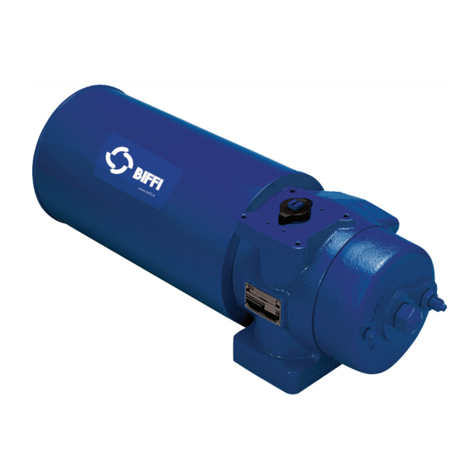
BIFFI
BIFFI FCB Series Operating instructions
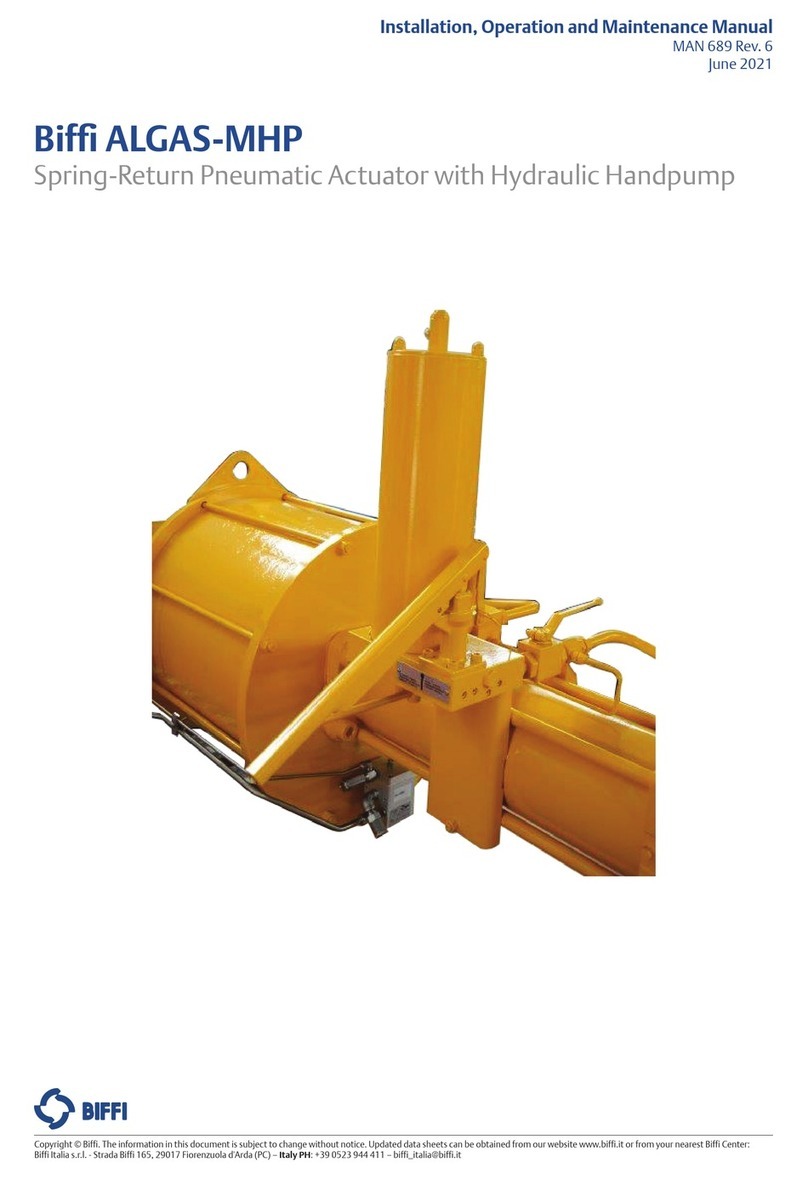
BIFFI
BIFFI ALGAS-MHP User manual
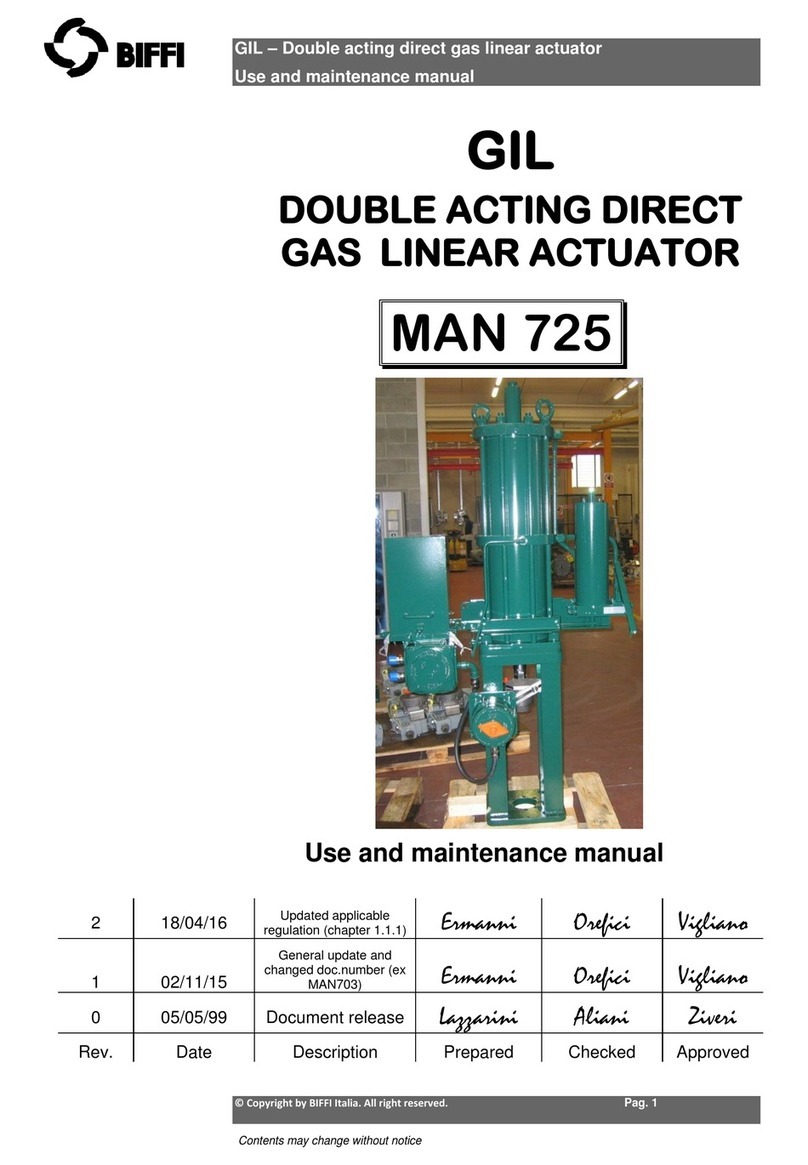
BIFFI
BIFFI GIL MAN 725 User manual
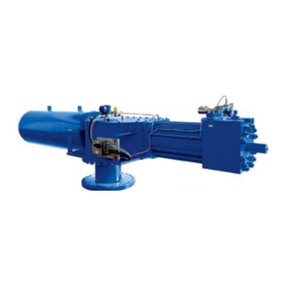
BIFFI
BIFFI OLGAS-H User manual

BIFFI
BIFFI OLGA-H User manual
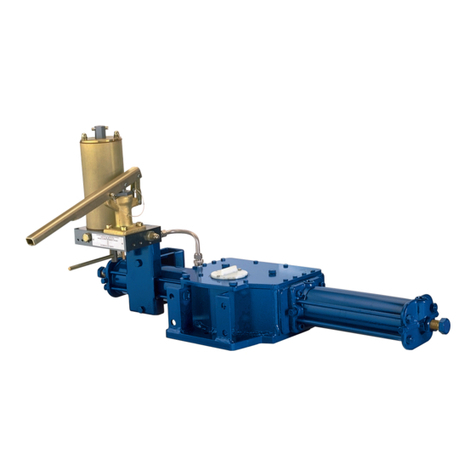
BIFFI
BIFFI GIG User manual
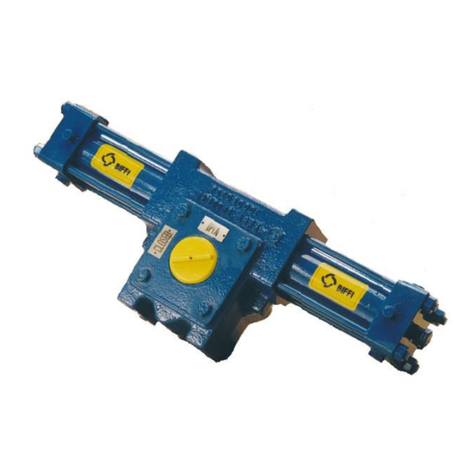
BIFFI
BIFFI RPHD User manual
BIFFI
BIFFI ICON3000 Series User manual
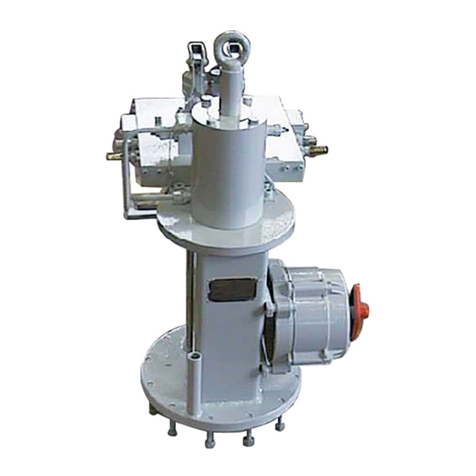
BIFFI
BIFFI HLA User manual

BIFFI
BIFFI HLA Series User manual
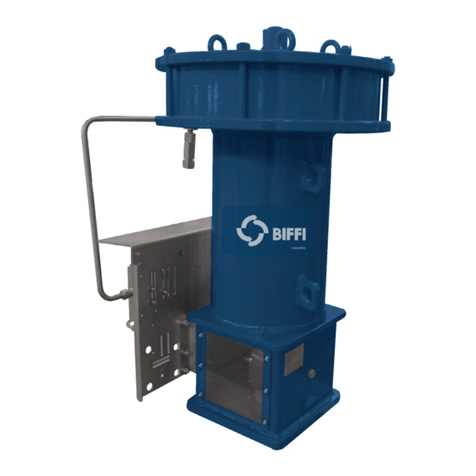
BIFFI
BIFFI PLAS Series User manual
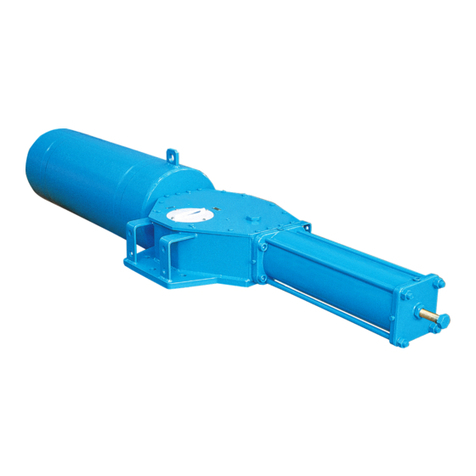
BIFFI
BIFFI OLGAS User manual
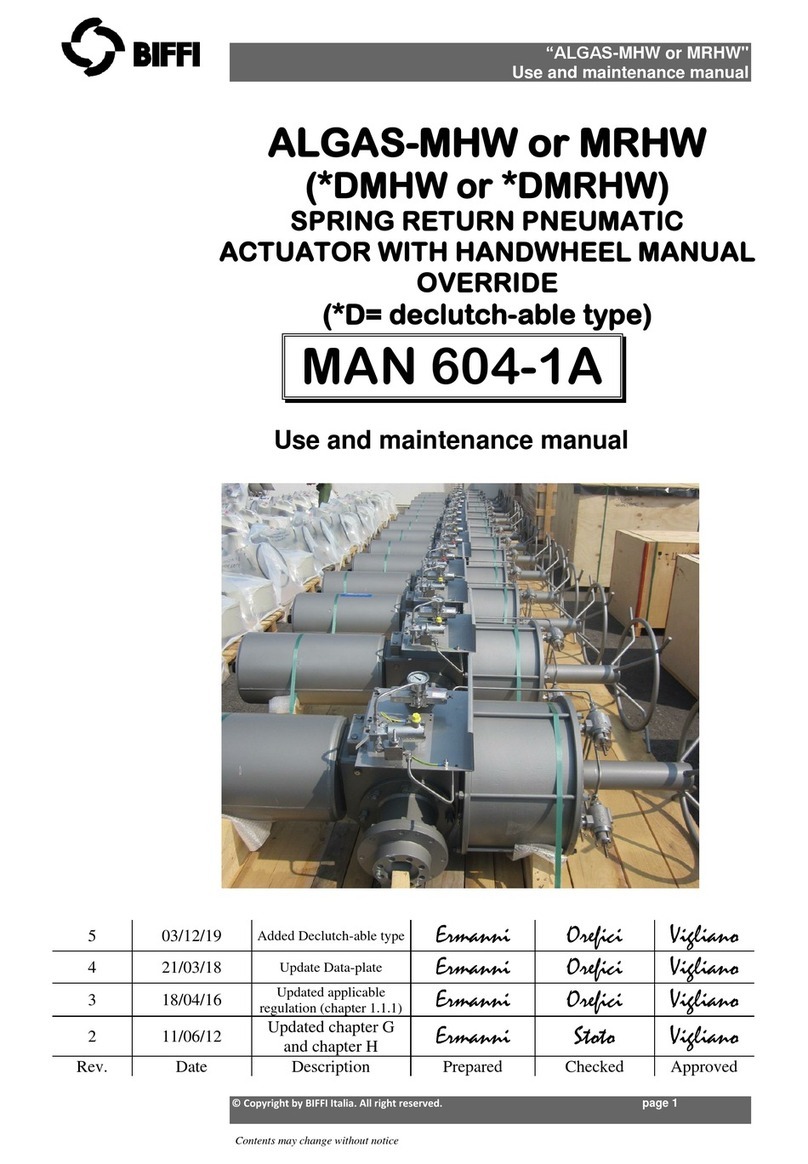
BIFFI
BIFFI ALGAS-MHW User manual
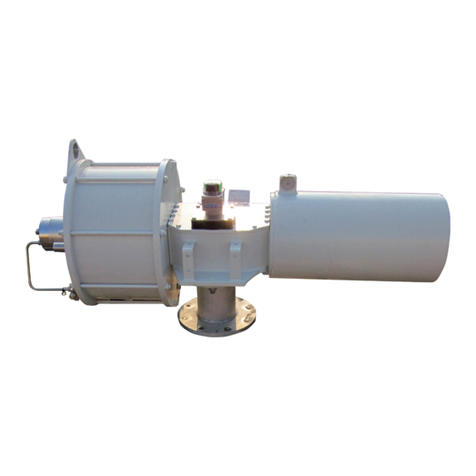
BIFFI
BIFFI ALGAS-QA EAC User manual

BIFFI
BIFFI RPS User manual
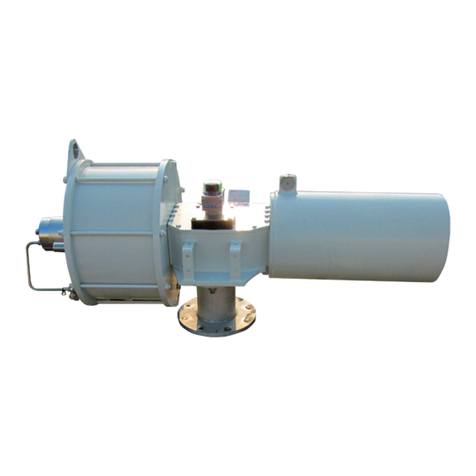
BIFFI
BIFFI ALGAS-QA Series Manual

BIFFI
BIFFI RP14 User manual
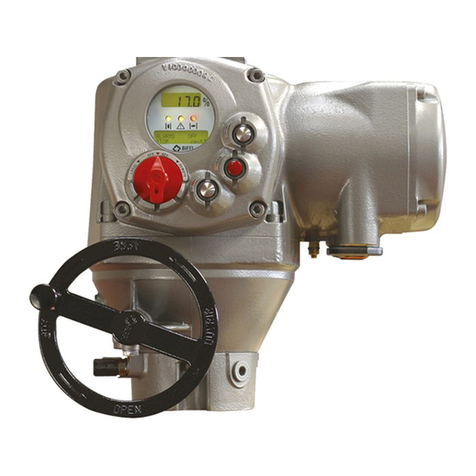
BIFFI
BIFFI F01-2000 User manual
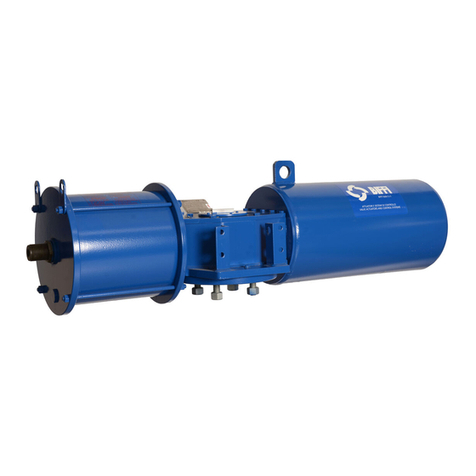
BIFFI
BIFFI ALGAS User manual

BIFFI
BIFFI GIGS 0.3 User manual

